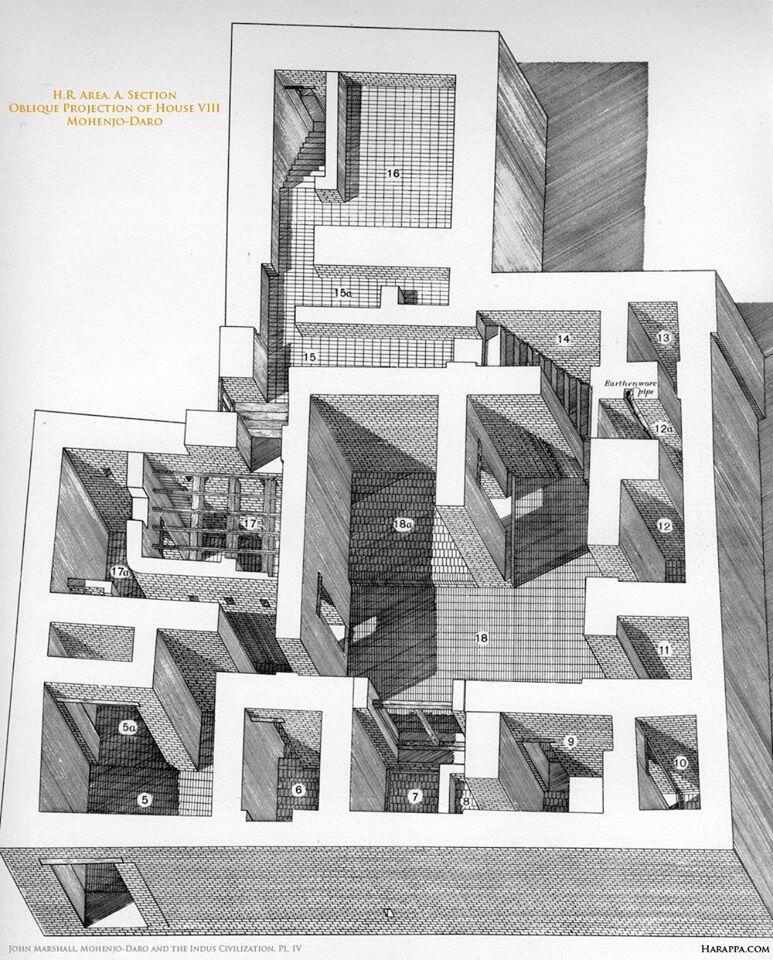By StephanieV. December 10th, 2014
John Marshall writes of House 8, an "average upper class house" in the HR section of Mohenjo-daro: "To the right of the porter's lodge [5] a short passage led to the central courtyard of the house (18), which was open to the sky and provided light and air to the rooms grouped about it on both the ground and upper floors. And here, let me say parenthetically, that the principle of the open courtyard encompassed by chambers was just as fundamental to house-planning at Mohenjo-daro as it was throughout the rest of the prehistoric and historic Asia, and as it has continued to be in India until the present day. In House VIII the courtyard measures approximately 32 feet square, but the square is not a true one. Like other open courtyards, it was paved with brick and provided with a covered drain...
What purpose Room 18a , on the north side of the court, served, is doubtful, but it is not unlikely that it was the kitchen, since there must have been a kitchen on the ground floor, and this is the only room that would have been suitable. The other remaining apartment on the ground floor (No. 17), with a curious passage on two sides, would have made a convenient guest-chamber, since, while it was more or less isolated from the rest of the house, there was ready access to it from the entrance hall. The ceiling of this room, which was unusually low (less than 7 feet above the floor), was carried on rafters of deodar (Cedrus deodara) and dalbergia sissoo, the charred ends of which were still found embedded in the walls." (John Marshall, Mohenjo-daro and the Indus Civilization, pp. 18-19).

